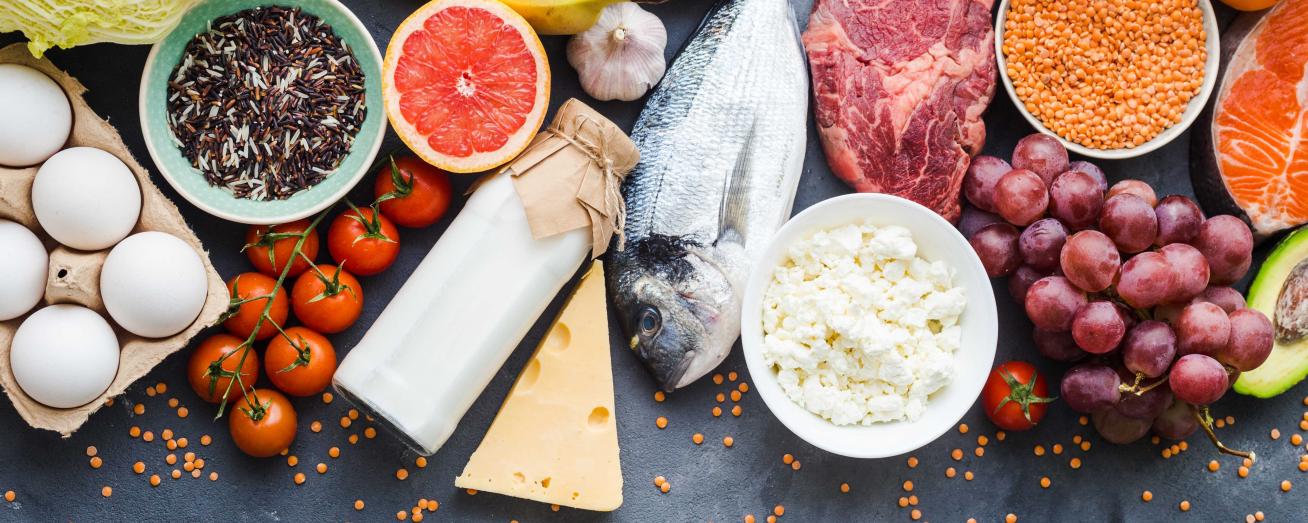A gluten-free diet is the only treatment for celiac disease. While the diet can be a prescription for health, wheat and gluten are ubiquitous ingredients in our food supply. Maintaining a gluten-free diet can be challenging and requires knowledge of ingredients, food preparation and label reading.
Individuals on a gluten-free diet can enjoy a variety of naturally gluten-free foods as well as many manufactured gluten-free products. There are many manufactured gluten-free products specially designed to fill the nutritional needs of the individual as well as provide a safe gluten-free substitute for their usual food preferences. Manufactured gluten-free foods should be labeled as gluten-free or carry a gluten-free symbol or certification. Manufacturers can use the symbol of the ear of wheat with a cross through it.
Careful label reading and avoiding any cross contamination is vital as traces of gluten may be present in various products; such, as food additives, flavorings and filling or binding agents, even medications may contain gluten.
Gluten-free diet
| Gluten-free diet | Foods allowed | Foods to check | Foods to avoid |
|---|---|---|---|
| Grains | Corn, rice, millet, buckwheat, quinoa, amaranth, tapioca, cassava, Gluten-free oats | Convenience foods (e.g. mashed potatoes, rice mixes), crisps, breakfast cereals | Wheat, barley, rye, spelled, triticale, spelled, kamut, green rye, bulgur, couscous, contaminated oats. Any breads, pasta, batters, cakes, pastries, crackers or biscuits, etc. made from these grains |
| Fruit | All fruits | Dried and candied fruits, smoothies, fruits in sauces | |
| Vegetables | All vegetables | Vegetables in sauces or gravies, dried vegetables, vegetarian convenience foods | Vegetables that have been breaded, coated in flour or batter, vegetables served with added seasonings or sauces |
| Dairy products | Milk (all types), cream, most yogurt, cheese, most ice cream | Flavored milks/shakes, yogurts/ice cream with toppings/added ingredients, processed cheese, cheese spreads, cheese sauces, ready-grated cheese | Malted milk drinks |
| Meat, fish, poultry, and eggs | All types of plain fresh or frozen meat or fish, poultry, eggs, pulses and lentils, peanut butter, plain nuts and seeds, plain tofu | Processed meats (sausages, burgers, luncheon meat, imitation fish products, meat substitutes, dried meat), meat served with sauces/ gravies, baked beans, seasoned or dry roasted nuts and seeds, flavored tofu, tempeh, miso | Meat fish or poultry in batter/bread crumbs |
| Fats, spices, sauces and baking ingredients | Vegetable oils, butter, margarine, lard, vinegar, pure spices, salt, pepper, herbs, all vinegar (including malt vinegar), Worcestershire sauces | Soy sauce, prepared mustards, seasoning mixes, baking sprays, tomato sauce, salad cream and dressings, chutney, gravy granules, curry powder, packet or jarred sauces. | Sauces thickened with wheat flour (e.g roux, Béchamel sauce) |
| Sweets and sweeteners | Honey, sugar (brown, white), agave, confectioners’ sugar, corn syrup, molasses, sugar substitutes, jam, jellies, marmalade | Chocolate and sweets | Licorice, ice cream wafers |
| Beverages | Soft drinks (e.g. cola and lemonade), coffee, tea, pure fruit and vegetable juice and juice drinks, distilled alcohol (bourbon, gin, rum, whisky) liqueurs, port, sherry, wine, gluten free beer/lager, cider | Hot chocolate mixes, cloudy fizzy drinks, coffee whitener | Beer, ale, stout, lager, barley water/squash, malted milk drinks |
References
- Food and Drug Administration (FDA)
- Academy of Nutrition and Dietetics Gluten- Free Diet. www.eatright.org
